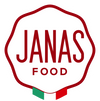Among Sardinian sweets, which are the most famous?

If you have been to Sardinia at least once, you will certainly have had the opportunity to taste traditional Sardinian sweets, often accompanied by a small glass of myrtle, Vernaccia or Malvasia liqueur. Whether to celebrate an important event, to end a meal or simply to accompany coffee or tea, typical Sardinian sweets are great protagonists of the island's gastronomic culture. The variety of such products is very wide, although the most frequently used ingredients are often repeated: mainly almonds, ricotta, past violada (a flaky pastry) and honey combined in different ways, as well as additions and characteristic flavourings such as saffron, sapa and sultanas.
Here are the Sardinian sweets you must try at least once:
Sardinian macaroons
|
Sardinian macaroons are sweets made with almonds, egg whites and sugar and they are one of the symbols of the Sardinian confectionery tradition. They differ from the macaroons found in other parts of Italy in that they are softer on the inside, while their exterior is a slightly crunchy sugar casket. Another peculiarity is the addition of a very small percentage of bitter almonds in the mixture, which makes their flavour more intense and contrasts with the sweetness of the sugar. A delicacy that is often enjoyed in combination with Vernaccia di Oristano, another excellence of our territory. The grandmothers' secret for preparing excellent macaroons? Before forming the typical balls to be baked in the oven, let the dough rest from the previous day. Because Sardinian sweets always have a hidden ingredient: lots of patience! Seadas or Sebadas To be pronounced strictly with the accent on the second syllable (Seàdas or Sebàdas), this sweet is a large ravioli of pasta violada (a flaky pastry made from semolina, water and lard) filled with fresh, slightly sour pecorino cheese and lemon zest. Seadas are fried in hot oil, turning golden and tempting with their little bubbles on the surface. They are then eaten with a drizzle of honey or a sprinkling of sugar, depending on your preference, giving the sweet side to a recipe that is made up of unsweetened ingredients. A contrast not to be missed! In Sardinia, Seadas are served at the end of a meal, although considering their caloric intake, they would perhaps be more of a single dish. But then again, when faced with such a tasty dessert, it's better not to think about dieting!
|
Sardinian nougat
Another very famous Sardinian sweet is Nougat, which is especially typical of the inland areas, where dried fruit grows in abundance. Traditional nougat is prepared with honey and almonds, walnuts or toasted hazelnuts. Sardinian nougat differs because it is less soft than the nougat found in the rest of Italy and because of the unique taste of the raw materials: dried fruit from inland areas and excellent quality honey.
TiriccheCalled in many ways (Thiriccas, Tilicche, Caschettas), Tiricche are very elegant sweets, shaped like small crowns. They are made of embroidered strips of pasta violada enclosing a filling of almond paste and saba (or sapa), the cooked must that gives Tiricche a brown colour and a divine flavour! Tiricche originated as typical Easter sweets, but are now eaten on all occasions and included in the tray of mixed sweets served at the end of the meal. Pardulas and casadinasPardulas and Casadinas are two similar sweets, but made with two different basic ingredients. Pardulas, also known as Pardule, are filled with sheep's ricotta cheese, while Casadinas are filled with fresh Pecorino cheese. Both are made with a thin, crispy pastry shell and have a softer filling; they are flavoured with citrus peel and, especially in southern Sardinia, with saffron, which gives them a bright yellow colour. They are typical of the Easter period but can be found throughout the year.
|
These were the most famous Sardinian sweets. Have you tasted any others that you think we should have included in this list?

